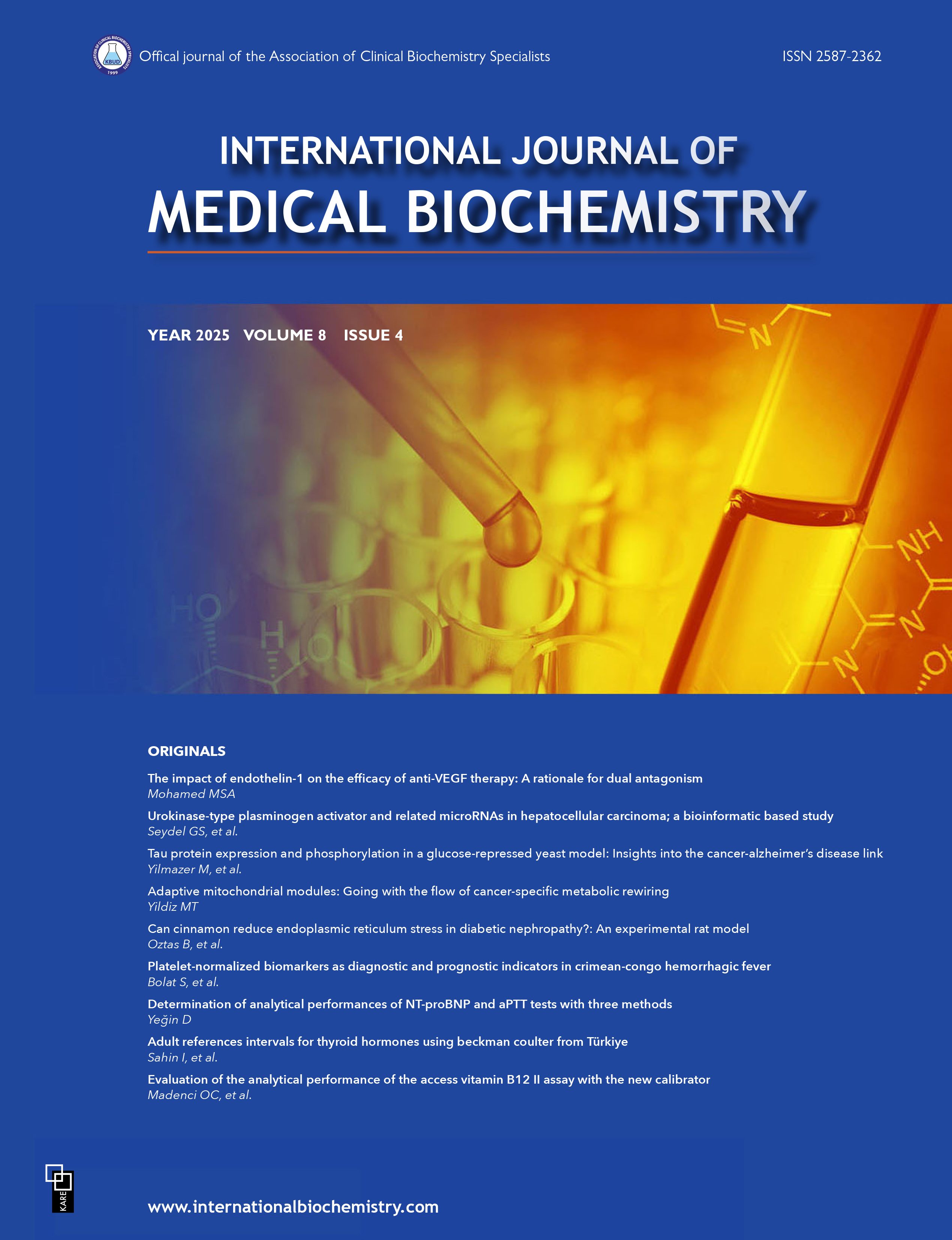Expression of miRNAs in prostate cancer cell lines and prostate epithelial cell lines
Eda Balkan1, Merve Aykaç1, Aslı Kara2, Semin Gedikli31Department of Medical Biology, Ataturk University, Erzurum, Turkiye2Department of Internal Diseases, Erzurum City Hospital, Erzurum, Turkiye
3Department of Histology, Erzurum Atatürk Unıversity Faculty of Veterinary, Erzurum, Turkiye
INTRODUCTION: Prostate cancer (PCa) is among the most frequently diagnosed cancers and a leading cause of cancer-re-lated deaths in men. Although prostate-specific antigen (PSA) testing has become routine in screening and early detection, PSA has high false-positive rates and poorly correlates with disease stage. Consequently, other diagnostic and prognostic markers for PCa are urgently needed. MicroRNAs (miRNAs) modulate gene expression at the transcriptional level and are known to play key roles in various physiological events. Growing evidence indicates that miRNA dysregulation is involved in the initiation and progression of many diseases, including PCa. Various miRNAs have been associated with PCa pathogenesis, suggesting that miRNA expression profiles have potential utility in the prognosis, diagnosis, and treatment of this disease. miRNA expression levels have been investigated in prostate epithelial cells by PCa cell culture.
METHODS: The present study compared the expression levels of selected prognostic miRNAs targeting that have been implicated in the pathogenesis of PCa. Using cDNA obtained from the C4-2 human PCa and PNT1a normal prostate epithelial cell lines, miRNA expression levels were quantitatively analyzed via melting curve analysis using the miScript SYBR Green kit in a Rotor-Gene Q real-time polymerase chain reaction (PCR) device.
RESULTS: Reverse transcription quantitative PCR analyses have demonstrated miRNA expression levels in the C4-2 PCa cell line and PNT1a prostate epithelial cell line. MiR-125, -145, -200, and -222 were found to be overexpressed in the PCa cell line (p<0.05), while there were no statistically significant differences in miR-32 expression of miR-21, -26, Let-7, -34, or -221 between PCa cells and PNT1a cells (p>0.05).
DISCUSSION AND CONCLUSION: Considering the variation in expression level of miRNAs targeting genes responsible for the etiopathogenesis of PCa. Provides information on the use of miRNAs as prognostic markers in PCa.
Keywords: Androgen receptor, microRNAs, prostate cancer
Manuscript Language: English







